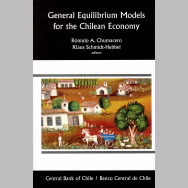Volume 9: General Equilibrium Models For The Chilean Economy
Publications
Volume 9: General Equilibrium Models For The Chilean Economy
Description
General equilibrium theory and modeling have proved to be useful for understanding economic interactions between markets and agents and the determination of prices and quantities. Applied general equilibrium models (GEM) have been developed and used to address a wide range of theoretical questions and empirical/policy issues, in the fields of macroeconomics, international trade, public finance, and environmental analysis, among others. This volume—the first of its kind in Chile—comprises a representative collection of recent GEM research and applications that illustrate the usefulness and relevance of frontier general equilibrium tools for better understanding aggregate structures and policy responses. It should be of interest to academics and policymakers in Chile and elsewhere, for several reasons. First, Chile is known for implementing bold and innovative economic policies. The assessment and quantification of potential effects is particularly valuable when performed by using the types of models presented herein. Second, this book includes a variety of methodological choices available to address key issues. The thoughtful combination of empirical and theoretical considerations informs the user about model strengths and weaknesses and the types of questions that they are able to address. Finally, the volume also presents some novel methodological contributions to the empirical and theoretical literature on general equilibrium models. The broad scope of the issues covered and the wide spectrum of methodological choices presented in this book show how active the profession is in providing a better characterization and a more precise evaluation of policy reforms. Vigorous contrast of different perspectives and rigorous academic debate of these topics are invaluable for contributing to more informed policy decisions
Editado por Rómulo A. Chumacero y Klaus Schmidt-Hebbel.
Volume 9: General Equilibrium Models For The Chilean Economy
Boxes and graphics

